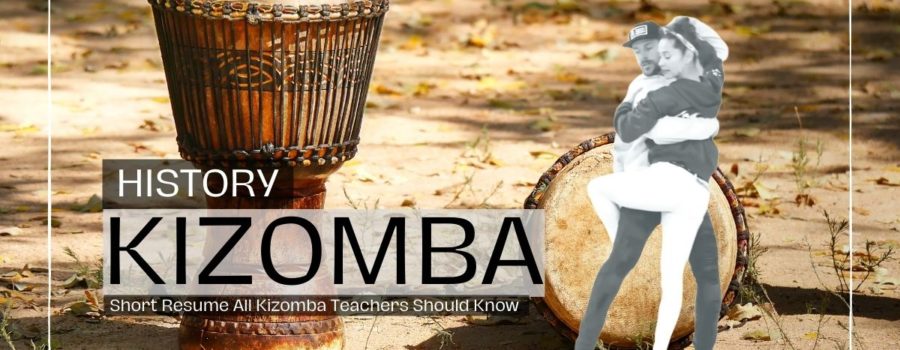To study Kizomba History is a long process and with a need to dedicate the deserved time.
At this article you will get a Kizomba History Resume, that will allow you to get a wide view of this beautiful movement.
THE WORD
KIZOMBA is a word from an Angolan language called Kimbundo and it means party.
Angola as ex colony of Portugal till 1975, lived many years of civil war after that.
New generation of musicians wanted to create national music just to have fun, without any political or intervention message associated.
Eduardo Paim and his group S.O.S during the late 70’s started to merge different sonorities highly influenced from Semba, Caribbean music, other African sonorities and including POP music.
The elder in somehow criticised them, saying that what they were doing was not Semba, so when they were asked about what was that music that they were producing and the answer was very natural for them as they wanted to people to enjoy and have fun, answering KIZOMBA.
PALOP
PALOP means African Countries with Portuguese as Official Language
They are Angola, Cape Verde, Guinea Bissau, Mozambique and Sao Tome and Principe
Each one of this countries have their traditional and popular rhythms, but we need to enlighten some of them when we talk about “KIZOMBA”
Angola —> Semba
Cape Verde —> Coladera
Guinea Bissau —> Gumbé
Mozambique —> Marrabenta
Sao Tome and Principe —> Puíta
THE DANCE
In each of the PALOP countries mentioned before, they all have their traditional and popular dances too.
At the beginning in any of them Kizomba was associated to a dance style. Including, at the beginning when you listen about Kizomba associated to a music style, we would be talking about Angola.
The term “Passada” (means doing steps in Portuguese) was the main association to the way of dancing in couple to several music genres.
As far as our studies reveal, the couple dance was very minimalist, mainly with side basic and walking and it were the Angolans that started being more creative in terms of couple dance evolution with the basic 3 creation, as also the “saídas” (exit from the zero position).
ZOUK MUSIC
In the mid 80’s coming from the French Antilles (Martinique and Guadalupe), the band Kassav made a huge world success, creating a new music style that was baptised by Zouk, that also means Party in French Creole.
It was the song “zouk la sel medikaman nou ni” (the party is the only medicine we have) that in somehow baptizes this genre.
It was such an international success, that the audience naturally start demanding more of this sonority. Naturally, also in Africa, the bands started to try to play their own style of Zouk, mixing with their traditional and popular rhythms.
In Angola Eduardo Paim and S.O.S started the “Kizomba Movement” before the Zouk appearance, but the fact is that it was a huge influence. This “Angolan way” of producing Zouk was baptised by Kizomba. In the same way as in Cape Verd was baptizes as Cola-Zouk. Many other countries adopted the name Afro Zouk.
PORTUGAL MEETING POINT
Mainly in Lisbon was the meeting point between several immigrants from the PALOP. People trying to find better life conditions, running from the war, to study…
During the 90’s the African Clubs and students parties were the place where PALOP and some Portuguese hang out and where the word Kizomba started to be spread through all the community.
In an organic way the word Kizomba started to be associated to a style of music and gradually to a dance style.
Some purists (even nowadays) didn’t agree with this name generalisation, but the masses started to adopting the name.
FIRST GENERATION OF KIZOMBA TEACHERS
As far as we know, Mestre Petchú was the first one to create a Kizomba teaching methodology to be introduced in dance studios. Even for him, at the beginning, was strange this concept of teaching Kizomba in a lesson format, as people were used to learn from the elders and in parties by only visualisation and imitation.
When a group of people asked him for the first time to teach in Portugal, he went there and he say that was one of his worst experiences and feelings, as he wasn’t ready and didn’t know how to share his knowledge in words.
He went back home, pick up the broom, start dancing naturally and in simultaneous drawing in paper the steps he was doing with the broom.
Like this, was born the first Kizomba Teaching Methodology (as far as we know)

Together with Mestre Petchú we need to name some others that also started this movement in Lisbon. Tomás Keita (Guinea Bissau), Avelino Chantre (Cape Verde), António Bandeira (Angola) are the ones that appear at this photo where it happened the first Kizomba conference to advertise Kizomba, happening in 2005 at the club B.leza.
Also we need to name Zé Barbosa and Waty (both from Cape Verde).
Then appear a second generation that had a big responsibility to make the Kizomba more international, together with the ones named previously. Kwenda Lima, Iris de Brito, Nuno & Vanda, Paula & Ricardo (Afrolatin Connection), Benjamin Nande, Helio Santos, Mandela.
(Disclaimer: It is possible that there are some names not mentioned here, but this were in fact some of the most important at the time)
THE FESTIVALS
Africadançar was the first Kizomba festival with a World competition associated back to 2008.
This was an important milestone, as it opened the door for the emergence of more festivals, helping immensely to the proliferation of Kizomba.
We have to give credit to the Salsa community, as it was undoubtedly the first open door to make Kizomba known internationally. Whether for dance schools or festivals.
With the appearance of television programs in Portugal, giving prominence to Kizomba, it allowed the musical style to reach the masses, becoming a mainstream musical style.
In addition to dance practitioners, the musical style has become part of the country’s daily routines, making it possible to listen to Kizomba on the radio, on television, in stores and even in house music clubs.
NEW STYLES
In the late 90s and early 2000s new styles of music began to appear and, consequently, new ways of interpreting them in terms of dance.
As Angolan production Tarraxinha, as Cape Verdian production Guetto Zouk.
Music more modern, with slower tempo, stronger beat and following the world tendencies of POP, Hip Hop and electronic music
Around 2013 with the appearance of New Sonorities highly influenced by DubStep and Remixes, naturally the dance also suffered changes. This is the beginning of Urbankiz dance
Since the beginning there were a lot of different dance styles, but always they were called Kizomba. Like in other social dances, (salsa, bachata, tango,…) there was the need to create name labels like Classic Kizomba, Urbankiz, Fusion and Tarraxo.






Recent Comments